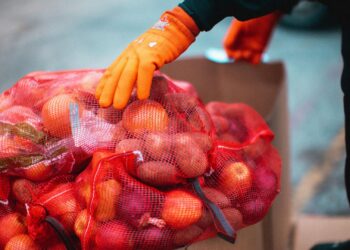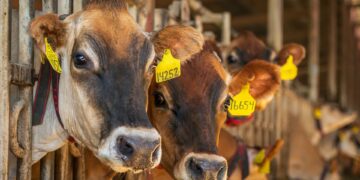It’s true Mzansi! Having a drip irrigation system that saves water, time and money, is the most efficient way to deliver water to your veggie patch. But while commercially promoted drip irrigation systems can cost a small fortune, North West subsistence farmer, Jasto Phale says there’s a cheaper alternative – 2-litre bottles.
This Brits-based farmer recently caught the attention of backyard growers and community gardeners in his area with the cleverly designed drip irrigation system he made using recycled 2-litre plastic bottles. While this method of drip irrigation may be nothing new, it is a first for Phale and his community and fellow backyard growers.
“It saves me so much time and stress. When I am not at home, I don’t have to worry about who is watering the garden,” he explains.
Phale has been growing vegetables on a small patch of land – no bigger than a vehicle garage – for the past 10 years. It’s always been a bit of a passion project that provides his family with fresh produce. He cultivates spinach, beetroot and tomato.
The rest of his backyard houses chicken and goats, but only a few though, he says.
Finding a cheap solution
Maintaining a vegetable garden, no matter how small, requires passion, time, money dedication – something Phale is all too familiar with.
Phale’s round-the-clock concern for his food garden when he was not at home is what inspired him to come up with the 2-litre bottle drip irrigation system.
“I live in a rural area where access to water is problem. Often, my whole family would go away for the weekend and there would be no proper irrigation in the garden. Once, when we were away for the weekend, we returned only to discover that the garden had dried up.”
This pressured Phale into studying ways in which he could avoid this in the future. The solution, however, came to him in a very unusual way.
“I had a bottle of paraffin in my car. The bottle had a small whole and gradually leaked over a period of time. That’s when it hit me, I need to poke small holes in a bottle and let it drip water into my garden.”
Up to 48 hours of coverage
Phale says this is the perfect solution for when he is away from his vegetables for long periods. He says one 2-litre bottle can drip for up to two days.
“My main crop is spinach and they usually need moist ground. This system keeps the whole ground moist for quite some time. Also I am using less water to water the garden. It’s saving me water,” he explains.
What’s also great about 2-litre bottle irrigation system is that Phale saves money as well. “Because I’m in a rural area there’s no running water so I have to fetch water from somewhere else. Sometimes, we even have to buy water, so this drip irrigation system saves me money.”
Already, his clever design has sparked the interest of community vegetable gardeners and backyard growers. Some of who have started collecting 2-litre bottles to design their take on the drip irrigation system.
Okay! So what do you need to make your own 2-litre bottle drip irrigation system at home?
What you need:
- Wire
- 2L bottles
- Thick sticks
- Nail or sharp pointed knife
- Water
Steps to follow
Step 1: Remove the labelling from the empty 2-litre bottles and pierce small holes in the bottom half of the bottle using a nail or sharp-pointed knife. Depending on your desired water flow, you can pierce between three to five holes in the bottom.
Step 2: Carve slits on one end of each stick, and in a straight line, firmly insert the sticks into the ground throughout the garden. Make sure that the slitted side is pointing upwards.
Step 3: Insert the wire into each slit to resemble a washing line. Secure the wire both at the first and last stick to ensure that the wire is hanging firm. You don’t want the wire to be tight, so that it can carry the water bottles.
Step 4: Take each bottle and wrap a wire around the bottle neck. Hook this on to your wire line.
Step 5: Fill the bottles with water and let your new drip irrigation system do its thing. You can make as many drip irrigations as you need for your garden.
ALSO READ: Is energy farming the next big thing in Mzansi?
Sign up for Mzansi Today: Your daily take on the news and happenings from the agriculture value chain.


















